Table of content
- Sautéing: The Quick and Flavorful Approach
- Blanching: Preserving Color and Crunch
- Creamed Spinach: Indulgence Meets Nutrition
- Spinach in Smoothies: Stealth Nutrition
- Spinach in Soups and Stews: Hearty and Wholesome
- Spinach and Feta Stuffed Chicken Breast
- Spinach-Artichoke Stuffed Portobello Mushrooms
- Spinach and Ricotta Galette
- Spinach-Pesto Pasta
Spinach, a leafy green powerhouse, has long been celebrated for its remarkable nutritional profile and versatility in the kitchen. Often dubbed a “superfood,” this humble vegetable is packed with vitamins, minerals, and antioxidants that support overall health. Yet, despite its reputation, many home cooks struggle to prepare spinach in ways that are both flavorful and health-conscious. Overcooking can lead to a soggy, bitter texture, while under-seasoning might leave it tasting bland. This article explores the science behind spinach’s nutritional benefits and provides actionable tips, creative recipes, and cooking techniques to transform this leafy green into a culinary star. Whether you’re a seasoned chef or a novice in the kitchen, you’ll discover how to elevate spinach from a side dish to a centerpiece of your meals.
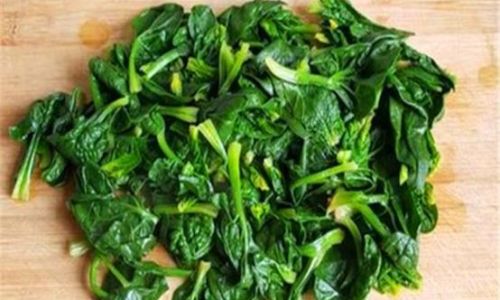
The Nutritional Marvel of Spinach
Before diving into recipes, it’s essential to understand why spinach deserves a prime spot on your plate. A 100-gram serving of raw spinach contains:
- Vitamin A: 56% of the Daily Value (DV), crucial for eye health and immune function.
- Vitamin C: 14% of the DV, an antioxidant that protects cells from damage.
- Vitamin K: 483% of the DV, vital for blood clotting and bone health.
- Iron: 15% of the DV, essential for oxygen transport in the blood.
- Folate: 49% of the DV, critical for DNA synthesis and fetal development.
- Magnesium: 20% of the DV, supporting muscle and nerve function.
Additionally, spinach is rich in antioxidants like lutein and zeaxanthin, which promote eye health, and nitrates that may lower blood pressure. However, the way you cook spinach can influence nutrient retention. For example, boiling spinach can leach water-soluble vitamins like vitamin C and B vitamins into the cooking water, while steaming or sautéing preserves more of these nutrients.
Cooking Methods That Lock in Flavor and Nutrients
Sautéing: The Quick and Flavorful Approach
Sautéing spinach with a touch of healthy fat (like olive oil or coconut oil) and aromatic ingredients is one of the simplest ways to enhance its taste while retaining nutrients. The high heat and minimal cooking time preserve vibrant color and texture.
Recipe: Garlic-Lemon Sautéed Spinach
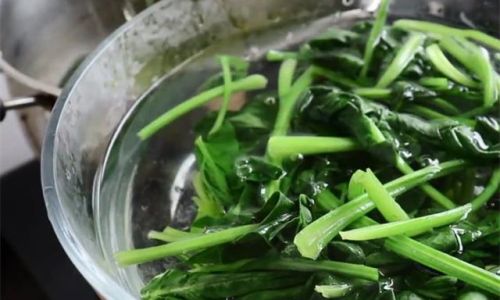
- Ingredients: 2 tbsp olive oil, 4 garlic cloves (minced), 500g fresh spinach, zest of 1 lemon, salt, and pepper.
- Instructions:
- Heat olive oil in a large skillet over medium heat.
- Add minced garlic and sauté for 1 minute until fragrant.
- Toss in spinach in batches, stirring until wilted (2–3 minutes).
- Remove from heat, squeeze lemon juice, and add zest. Season with salt and pepper.
Pro Tip: Avoid overcrowding the pan to prevent steaming, which can make spinach mushy.
Blanching: Preserving Color and Crunch
Blanching involves briefly boiling spinach and then plunging it into ice water. This method retains nutrients and bright green hue, making it ideal for salads or garnishes.
Recipe: Blanched Spinach with Sesame-Ginger Dressing
- Ingredients: 300g fresh spinach, 1 tbsp sesame oil, 1 tsp grated ginger, 1 tbsp rice vinegar, 1 tsp honey, toasted sesame seeds.
- Instructions:
- Boil salted water in a pot. Add spinach and cook for 30 seconds.
- Transfer to an ice bath. Drain and squeeze out excess water.
- Whisk sesame oil, ginger, vinegar, and honey. Toss with spinach.
- Garnish with sesame seeds.
Science Behind the Technique: Blanching deactivates enzymes that cause spinach to wilt quickly, extending its shelf life.
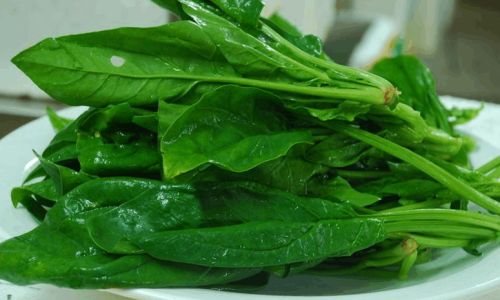
Creamed Spinach: Indulgence Meets Nutrition
Traditional creamed spinach often relies on heavy cream and butter, but this lighter version uses Greek yogurt and Parmesan for richness without guilt.
Recipe: Lightened-Up Creamed Spinach
- Ingredients: 450g fresh spinach, 1/4 cup vegetable broth, 1/4 cup Greek yogurt, 2 tbsp grated Parmesan, 1 shallot (minced), nutmeg.
- Instructions:
- Sauté shallot in olive oil until soft. Add spinach and broth; cook until wilted.
- Stir in yogurt, Parmesan, and a pinch of nutmeg. Simmer for 2 minutes.
- Serve as a side dish or pasta topper.
Nutrition Hack: Nutmeg contains compounds that enhance the absorption of spinach’s iron.
Spinach in Smoothies: Stealth Nutrition
For picky eaters or those seeking a nutrient boost, blending spinach into smoothies is a genius move. The mild flavor disappears into sweet fruits, while the fiber and vitamins remain intact.
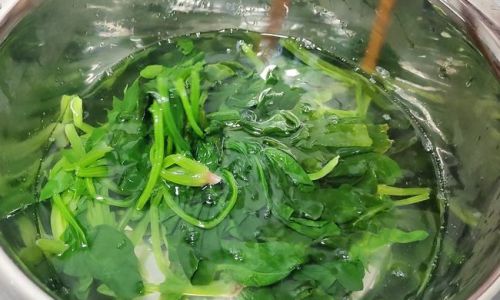
Recipe: Green Detox Smoothie
- Ingredients: 1 cup spinach, 1/2 banana, 1/2 cup pineapple, 1/2 cup coconut water, 1 tbsp chia seeds.
- Instructions: Blend all ingredients until smooth. Add ice for thickness.
Customization: Swap fruits based on seasonality (e.g., mango in summer, frozen berries in winter).
Spinach in Soups and Stews: Hearty and Wholesome
Adding spinach to soups during the last few minutes of cooking infuses the broth with nutrients while keeping the leaves tender.
Recipe: Lemon Chicken and Spinach Soup
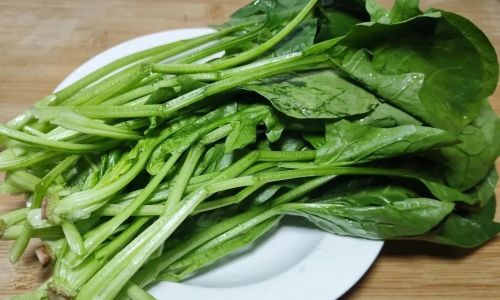
- Ingredients: 1 liter chicken broth, 2 chicken breasts (shredded), 1 cup spinach, 1/2 cup orzo, lemon juice, dill.
- Instructions:
- Simmer broth with chicken and orzo for 15 minutes.
- Stir in spinach and lemon juice. Cook until wilted.
- Serve with fresh dill and a lemon wedge.
Why It Works: The acidity from lemon juice helps the body absorb spinach’s iron more efficiently.
Maximizing Nutrient Retention: Dos and Don’ts
- Avoid Overcooking: Spinach cooks in minutes. Overheating breaks down cell walls, releasing nutrients into the cooking liquid.
- Pair with Vitamin C: Iron from spinach (non-heme) is better absorbed when eaten with vitamin C-rich foods like lemon, tomatoes, or bell peppers.
- Store Properly: Refrigerate spinach in a breathable bag to prevent spoilage. Wash just before use to avoid sogginess.
- Freeze for Later: Blanch and freeze spinach in ice cube trays for up to 6 months. Thaw cubes for quick additions to sauces or soups.
Creative Recipe Ideas Beyond the Basics
Spinach and Feta Stuffed Chicken Breast
- Instructions: Butterfly chicken breasts, stuff with a mix of sautéed spinach, feta, and sun-dried tomatoes. Bake until golden.
Spinach-Artichoke Stuffed Portobello Mushrooms
- Instructions: Roast portobello caps. Fill with a mixture of spinach, artichoke hearts, cream cheese, and Parmesan. Broil until bubbly.
Spinach and Ricotta Galette
- Instructions: Layer a buttery pastry with spinach, ricotta, and caramelized onions. Fold edges and bake for a savory tart.
Spinach-Pesto Pasta
- Instructions: Blend spinach, basil, pine nuts, garlic, and olive oil into pesto. Toss with whole-grain pasta and cherry tomatoes.
Common Mistakes to Avoid
- Using Dull Knives: Sharp blades prevent bruising leaves, which can lead to quicker spoilage.
- Ignoring Seasonality: Fresh, in-season spinach (spring and fall) has the sweetest flavor.
- Overlooking Frozen Spinach: Frozen spinach is blanched before packing, locking in nutrients. Use it in soups or dips.
The Cultural Tapestry of Spinach
Spinach’s culinary journey spans continents. In Indian cuisine, palak paneer (spinach curry with cheese) is a beloved staple. Italians use it in ripieni (stuffed pastas), while Greeks incorporate it into spanakopita (phyllo pastry pie). In the U.S., Popeye’s love for spinach popularized it as a symbol of strength. Embracing these global techniques can inspire new ways to enjoy spinach.
Conclusion: A Leafy Green Revolution
Spinach is more than a salad base—it’s a canvas for creativity and a gateway to better health. By mastering cooking methods that preserve nutrients and experimenting with flavors, you can turn this unassuming vegetable into a dish that delights the senses and nourishes the body. Whether sautéed, blended, or baked, spinach proves that health-conscious eating need not sacrifice taste. So next time you’re at the market, grab a bunch of spinach and let your culinary imagination run wild. Your body—and palate—will thank you.


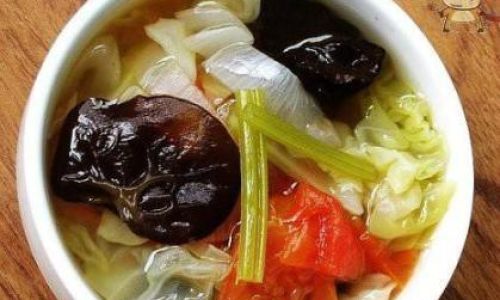

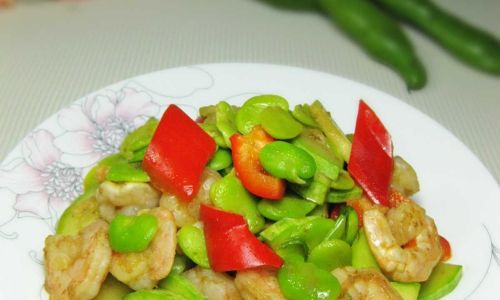

0 comments